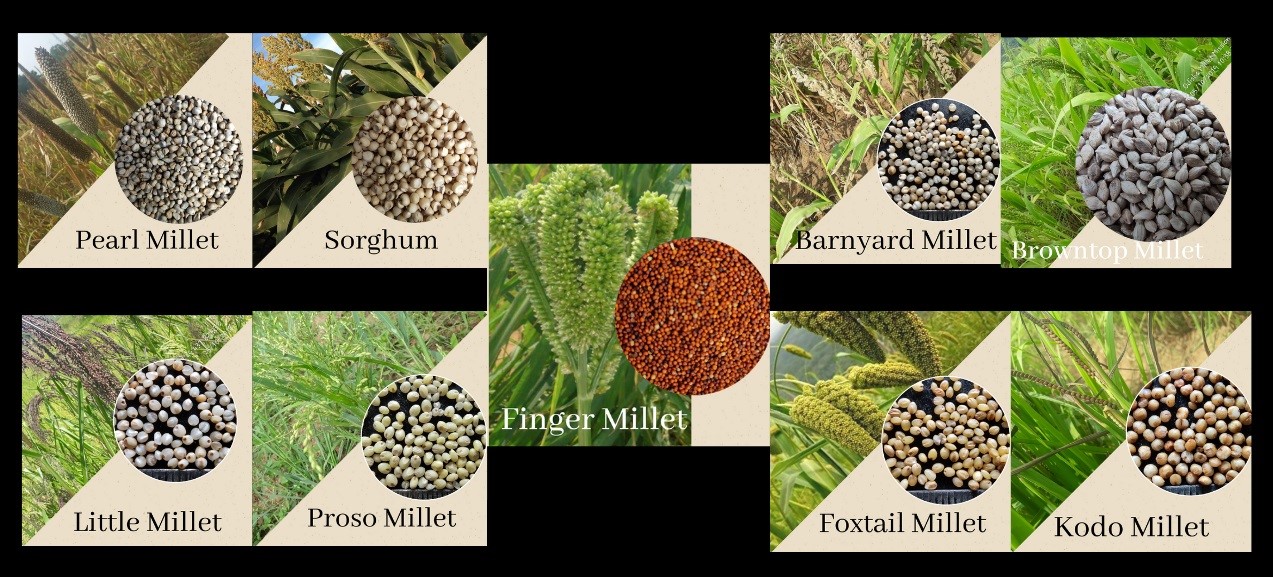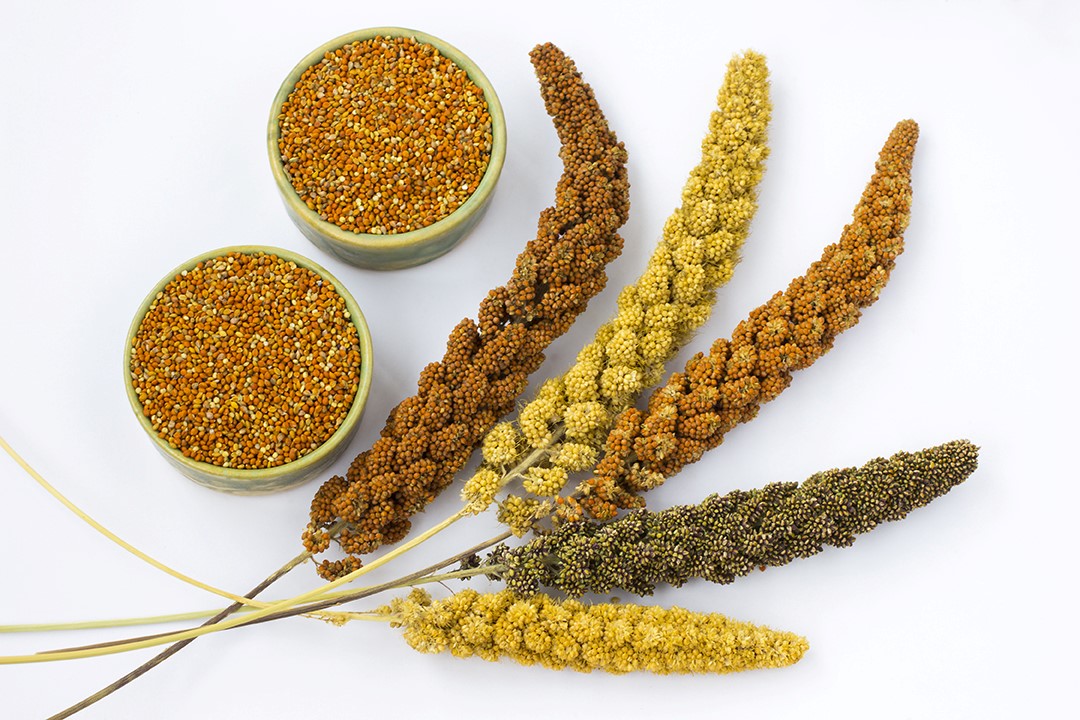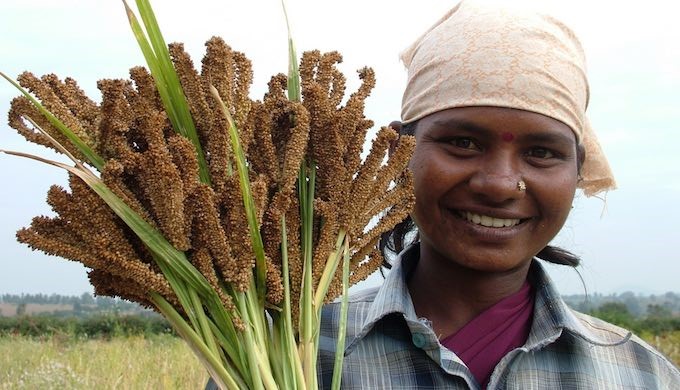Nutri-cereals: Health to Entrepreneurship
Sanjeev Kumar and Sujeet Kumar Jha
August 2nd 2025, 6:32:15 am | 5 min read


Introduction
Nutri cereals aka mote anaaj are considered a magic bullet and a quick healing remedy in today's busy and modern lifestyle. Busy life, physical laxity, and nutrient-deficient fast food are some of the factors due to lifestyle-related diseases like blood pressure, problems in blood arteries, etc., which are troubling people today. Along with this, immunity has also decreased in people of almost all ages. The belief is also getting stronger among the people that modern farming, in which chemical fertilizers and pesticides are used indiscriminately, their bad effects are now visible on health. In many areas, people use only organic foods grown from trusted sources or grown themselves. Agricultural and other processed products by modern methods are also being viewed with a slice of doubt. The quality of foods in terms of nutrition is also affected due to the many stages of processing through which they go through. Under these circumstances, people's inclination towards coarse grains is growing. Traditionally, coarse grains have always been in the food habits of people. Traditional dishes and offerings made of coarse grains are an integral part of Indian festivals and prayers. The demand for millet has increased not only in the domestic market but also in the international markets. Considering the water footprint and water utilization making a buzz among academia and policymakers along with the cost of production of cereals like rice, wheat, maize, etc. coarse cereals have found vocal support for the old and local traditional food cereals. Studies suggest that three to five thousand liters of water are required to produce one kilogram of rice. Rice crop is one of the largest water users and consumes about 34-43 percent of total irrigation water worldwide. New research of Indian agriculture is also working in this field so that through these traditional grains not only the health of the people can be improved but also the effect on soil health can be understood and adopted. Similarly, indiscriminate exploitation of natural resources like water, and fertilizers can also be reduced.
Major Coarse Cereals:
Jowar (Sorghum), Bajra (Pearl millets), Ragi (Finger Millets) are prominent major coarse cereals, while Kangni (Foxtail / Italian Millet), Kutki (Little Millet), Kodo Millet, Chena (Proso Millet), Jhangora (Barnyard Millet), Barry - (Pros / Common Millet), etc. are important minor millets.

Why it is necessary to return to coarse grains
Today environment-friendly agriculture and/or practice is being discussed on almost every platform at the global level to find out the answer to major issues of health, both human and soil. Agricultural policymakers are also paying special attention to coarse cereals. In recent times, both availability and access to improved seeds of coarse cereals have helped in the cause. Today, an overview of most of the market suggests that most of the agro-processed foods are moving towards a saturation level. There is a dearth of innovative health products in the market which can truly accomplish the dimensions of nutritional quality. Coarse grains and their processed products have a distinct identity of their own in terms of nutrients, fiber, quality, and taste. The promotion of coarse cereals aims at providing innovative solutions to existing health problems.

Institutional Boost:
The government of India has envisaged promoting coarse cereals by strengthening and initiating a number of Start-up innovations and challenges, moving away from the traditional system. The 'International Year of Millets-2023' is being celebrated in India and all around the world giving it a purview of mass movement so that nutria cereals, dishes made from them, and value-added products can be promoted. Through better promotion and research of their products, shelf life, etc. a different identity will be created at the national and international levels. Enriched with the concept of local, organic, nutritional, and wholesome, coarse grains have all the qualities to influence and demand its right place in the modern consumer-oriented market. With the help of tools and techniques of business, their market niche can be well-focused and identified.
What is special in coarse grains?
Many changes have been seen in the last several years, in which busy and stress-ridden lifestyles, change in eating habits, decrease in immunity, etc. are the major one. The uniqueness of nutritious cereals will mainly attract more urban and other customers in the future. The fiber and iron elements are abundant in these coarse grains. Many coarse grains are also used in many dishes like idli and dosa, making them preferably more digestible and nutritious.
Use of coarse grains:
i- Coarse grains are known as smart foods or superfoods because they provide nutrition as well as strength. The government is also promoting them as nutritious grains.
ii- Most of the millets are gluten-free.
iii- In these, the amounts of amino acids from which proteins are made are found in balanced amounts.
Entrepreneurship in Millets:
Entrepreneurship in agriculture is an open platform with tons of opportunities from primary to secondary and by-products. It has all the elements including cost, product, marketing, and customer which are considered strong pillars of entrepreneurship. There is some difference between entrepreneurship and business. Entrepreneurship involves taking a moderate level of risk. Millet cultivation and the associated value chain can be seen as the entrepreneurship of the future which can generate a continuous tenable employment situation. There are many problems like frequent changes in prices, spoilage of products, shelf life, market dynamics, etc., due to which the farmers are getting lesser prices leading to irregular profit and income. Agri-entrepreneurship is consistent with the delicate balance of demand and supply where there is a need to develop an understanding of the market.
The following are the main features of agricultural entrepreneurship-
1- Risk bearing- The basis of entrepreneurship is to achieve success mainly by bearing risks and uncertainties. Limited resources have to be used systematically and rationally in such a way that the risk can be reduced.
2- Innovation- Entrepreneurship is the creation of new ideas and the application of techniques in the market. Innovation in business marketing, high standards, and attracting the attention of consumers, etc. can help entrepreneurs to achieve success.
3- Creative thinking- Entrepreneurship inspires to implement new ideas, quality of work and business development.
4- Behavior based on knowledge- Based on knowledge and experience, one achieves bigger milestones by taking crucial decisions and proper planning.
5- Business Oriented- The entrepreneur must be business oriented to inspire a new start in the industry.
6- Principles Based - Entrepreneurship is based on certain principles. For this, knowledge of economics, law, social science, and statistics is necessary.
The value chain related to coarse cereals brings out some important scope of entrepreneurship. Before starting a new business or entrepreneurship on coarse cereals, following points should be kept in the mind:
i- Production: Farmers should harness the power of the group through Farmers' Production Organizations and to gain reach the desired market.
ii- Primary Processing: Primary processing like sorting, classification of coarse grains, dehusking, etc. should be done at the farmers' level itself so that they can get their right price. More emphasis should be laid on the processing so that more profit can be generated from less investment. Apart from this, the shelf life of products can be increased through processing, e.g., pasta, and vermicelli.
iii- Promotion of seed entrepreneurship: By promoting seed production entrepreneurship among farmers the dependencies on external agencies can be reduced.
iv- Storage and Packaging: through proper arrangement of storage, products can be bought and sold in the market at the right time. Packaging of processed products by advanced techniques also increases their shelf life.
v- Value chain addition: Biscuit and cake and other innovative industries have to be developed keeping the focus on acceptance among the customers.
vi- Export Industry: Special attention is required towards the export industry. There is a huge market for such nutritious cereals in western countries focusing on their requirement will further boost the demand.
vii- Price Competitiveness: Placing exorbitant prices for products must be avoided as consumers are sensitive to price. Consumer groups need to be identified and competitive prices must be offered.
viii- Awareness: Constant efforts should be made to make consumers aware of the health and other benefits of coarse grains. For this, more and more publicity should be done on popular platforms like social media like Facebook, Twitter, etc.
Role of Bundelkhand Region:
The Bundelkhand region is in the central part of the country and is spread over 14 districts in the states of Uttar Pradesh and Madhya Pradesh. Which includes Mahoba, Jhansi, Banda, Lalitpur, Jalaun, Hamirpur, and Chitrakoot districts of Uttar Pradesh, while Chhatarpur, Sagar, Panna, Tikamgarh, Niwari, Damoh, Datia districts, etc. of Madhya Pradesh are included. The climate here is mainly characterized by low and irregular rainfall. The climate here is considered favorable for the cultivation of coarse cereals. At the same time, the use of chemical fertilizers in this area is less as compared to other parts of the country resulting in little trace of chemical residues in the crops. These standards have their own importance among the customers at the international level also, which can be well utilized by the farmers of this region. The level of production can be further increased through the Farmers Producer Organizations and the risk factors associated with the market can be counted.
Successful Entrepreneurship: Women Entrepreneurs from Chennai: Ms. Sanjitha K.K.
Chennai-based woman entrepreneur Sanjitha K.K. Prachian is trying to make a difference in the field of coarse grains. Sanjitha started OGMO Foods in 2018 in Chennai. Their brand focused on products made using coarse grains and now has outlets in cities like Chennai and Pune. She marketed her product as organic. In the past, millet and coarse grains were produced in good quantity in India and especially in the southern states, but due to the change in food habits, lack of market, and change in consumer preference, the trend changed. Sanjita started promoting millet production again and tried to popularize the dishes made from it. She established the system well supported by promotion and appreciation by the consumer themselves. At present, their products are available at 30 to 40 regional retail outlets. She is the inspiration for the people following this trend of millet and entrepreneurship.

Time to turn to millets as a Climate-Nutri-Smart crop